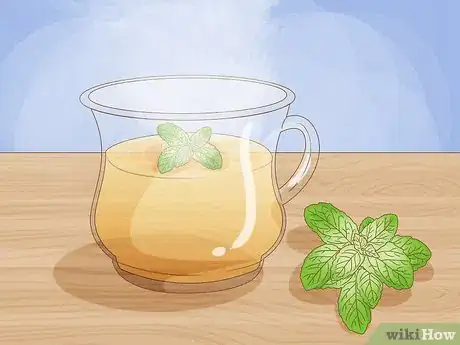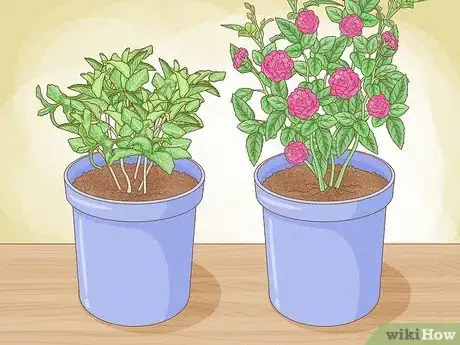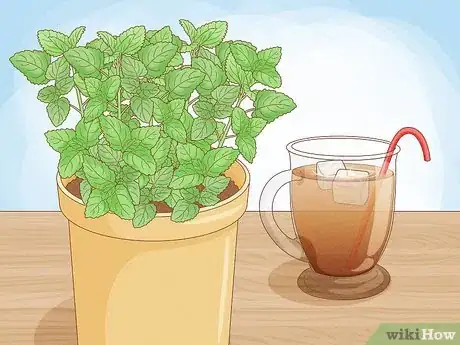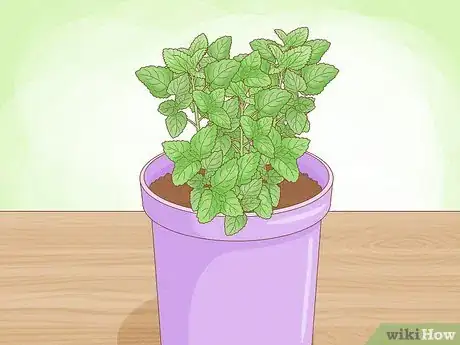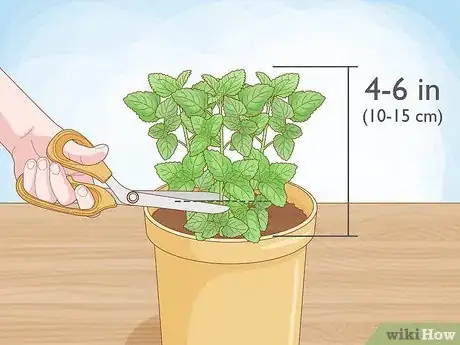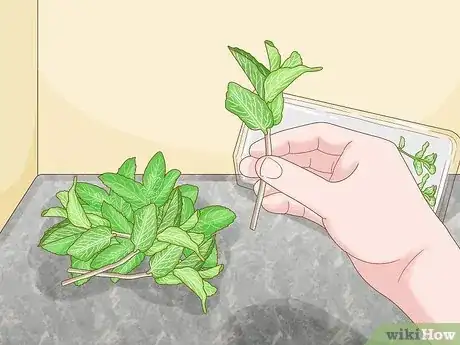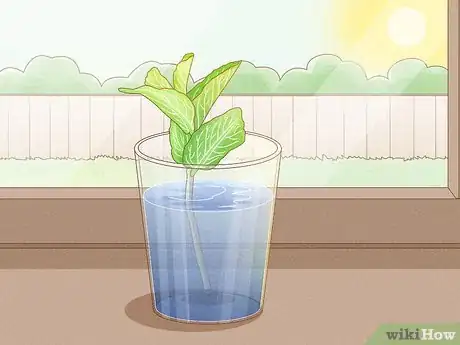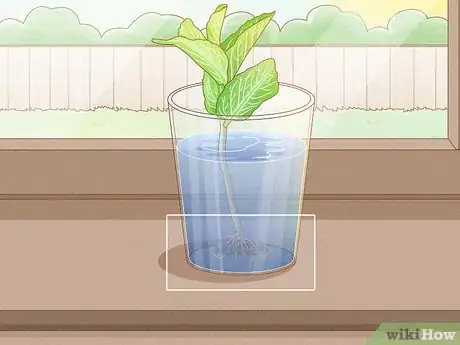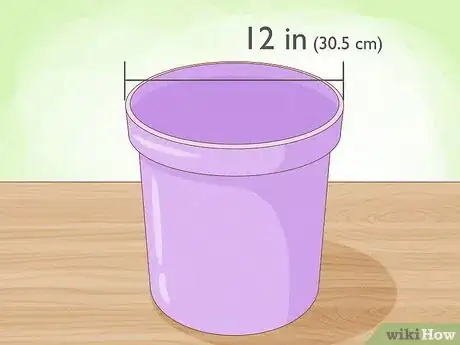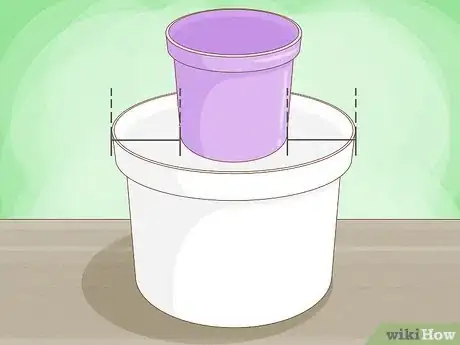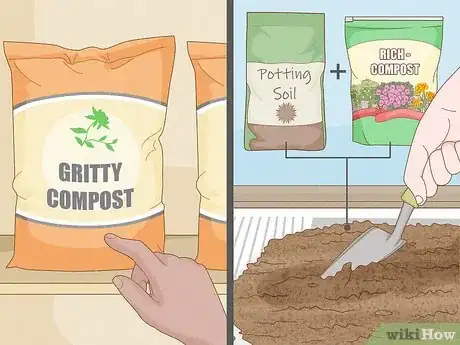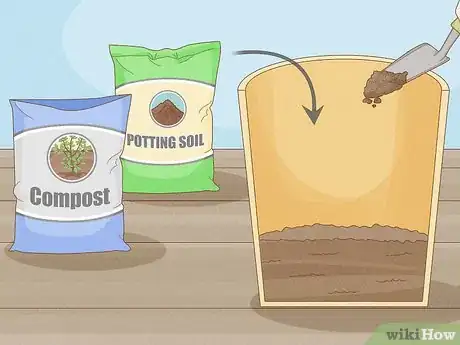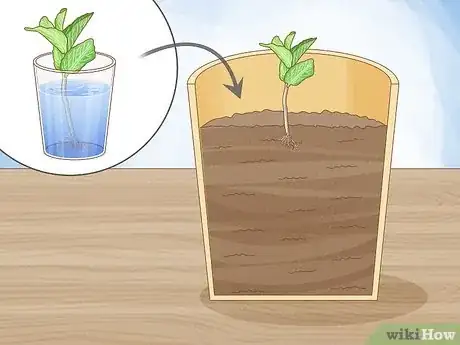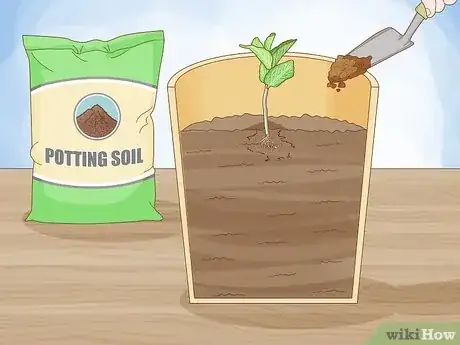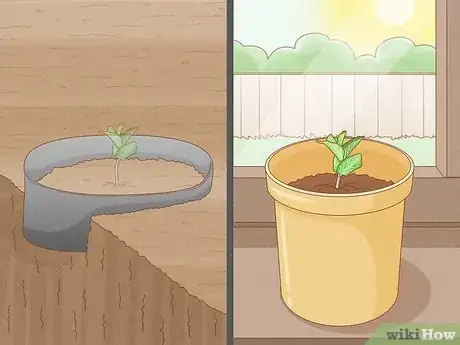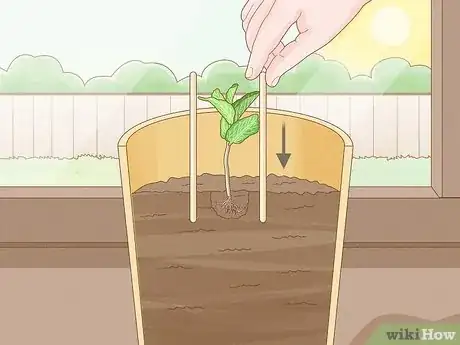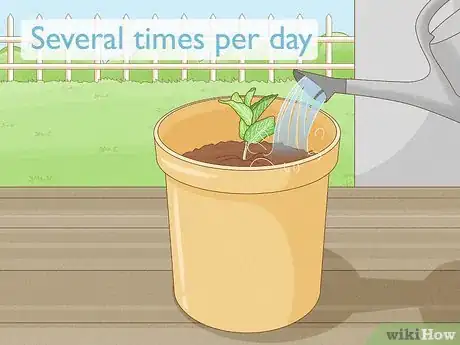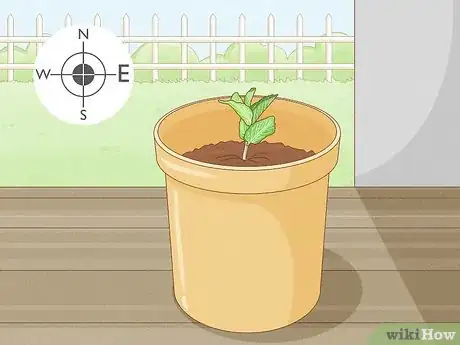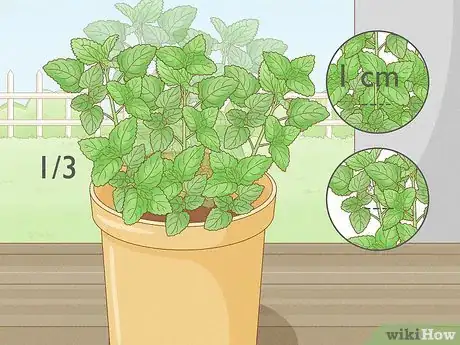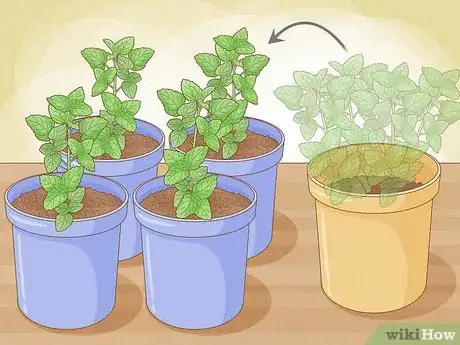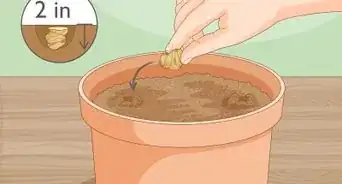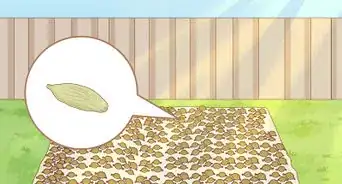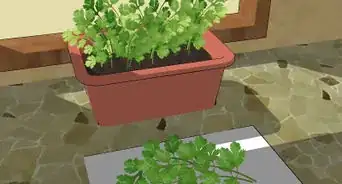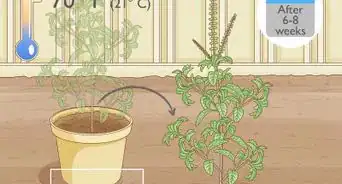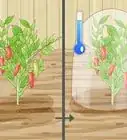This article was co-authored by Lauren Kurtz. Lauren Kurtz is a Naturalist and Horticultural Specialist. Lauren has worked for Aurora, Colorado managing the Water-Wise Garden at Aurora Municipal Center for the Water Conservation Department. She earned a BA in Environmental and Sustainability Studies from Western Michigan University in 2014.
wikiHow marks an article as reader-approved once it receives enough positive feedback. This article received 18 testimonials and 100% of readers who voted found it helpful, earning it our reader-approved status.
This article has been viewed 328,109 times.
Mint plants are the perfect starting point for a herb garden. They are usually contained in a pot because they are extremely invasive, sending out runner roots to take over the surrounding soil. Choose one of the 600 varieties of mint, and give it plenty of water and sun to keep your mint plant thriving.
Steps
Choosing Mint Varieties
-
1Choose peppermint if you want a brighter, strong flavor for tea or general use.[1]
-
2Pick spearmint if your garden, patio or windows get a lot of light and heat throughout the year. It is used very commonly in the Southern United States.Advertisement
-
3Plant pineapple mint if you need to plant mint next to other plants. It is one of the less invasive species of mint.
-
4Opt for lemon mint if you like a refreshing citrus flavor in lemonade or iced tea.
-
5Try apple mint for a more subtle flavor with fresh apple hints. This variety is popular in fresh salads and drinks.[2]
Starting a Mint Plant
-
1Go to your garden supply store to buy a mint seedling. Mint does not germinate from seed too easily, so only the most experienced gardeners should start from seed. Plant directly into potting soil or compost after you bring it home.[3]
- A garden store will have more varieties of mint; however, you may be able to find mint seedlings and plants at your local farmer’s market and supermarket.
-
2Take a cutting from a mature mint plant. Ask a friend if you can harvest from an existing mint plant or find one in a local garden. Cut approximately 1⁄2 inch (1.3 cm) above a stem junction with sharp scissors. Make sure the cutting is at least 4–6 inches (10–15 cm) long and remove most of the leaves.
-
3Opt to use a mint that is purchased from the fresh food section in your supermarket. It is not guaranteed that you will be able to grow a plant from each cutting, but it is a good way to use leftover mint if you are willing to experiment.
-
4Fill a clean glass with water. Place freshly cut sprigs in the glass to grow new roots. Keep it in a warm, sunny place and wait for white roots to grow out of the cut stem.[4]
- Add water as needed to keep the glass full.
-
5Wait until the white roots grow several inches long before planting. They can even extend to the bottom of your pot depth.
Choosing a Pot
-
1Shop for a pot that is at least 12 inches (30.5 cm) in diameter. A mint plant needs plenty of space to grow.[5]
-
2Choose a pot with drainage holes in the bottom. A mint plant thrives in well-drained soil. Purchase a saucer to place below the pot to avoid staining your windowsill or patio.
-
3Purchase an additional, much larger, pot if you want to pot mint and other herbs together. You can submerge the whole 12-inch pot in a larger pot, next to other herbs. Keep in mind that many species of mint will still find a way to take over the entire pot through the holes in the bottom of the mint pot.
- If you want to plant it with other herbs, you will want to separate the herbs later in the season.
Planting Mint in a Pot
-
1Purchase gritty compost from a local gardening store. You can also combine potting soil with rich compost. Mint plants need rich and well-drained soil to thrive.
-
2Fill the lower third of the pot with compost and potting soil.
-
3Set your mint cutting or seedling in the pot. Curl the roots if they are too long for the pot.
-
4Fill in the area around the mint with potting soil. Pack the area just enough so that the mint stands on its own.
-
5Line a portion of your outdoor garden with plastic if you want to plant your pot in the soil, but want to discourage it from spreading. Then plant the entire pot into the garden soil, allowing the pot to extend five inches above the surface of the soil.[6]
- If possible, avoid planting it in the garden. Place it on a patio or on a windowsill to avoid spreading the mint plant.
-
6Insert several wooden dowels next to the plant to give it support. These can be removed once the plant is thriving.
Caring for Mint Pots
-
1Water the soil so that it sinks down to the roots. Water it whenever it is dry for the first year. It should always have moist soil.[7]
- If you experience hot weather, you may need to water it several times per day.
-
2Keep it in an east-facing location. It does best with six or more hours of sunlight, but also likes to be shaded from hot afternoon sun. If you have very little sunlight in the winter, it may die back.
-
3Wait until the mint plant is full and the leaves are large before cutting and using the mint. Once it is doing well, frequent cuttings keep the plant full and the leaves strong in flavor.
-
4Cut the top half of the plant with sharp scissors. Cut one cm above a stem junction and below any flower buds. Don’t cut more than one-third of the leaves at one time.[8]
- If you allow your mint plant to flower, it will put the nutrients into flower production and slow down leaf growth.
-
5Divide your plant every few years. Cut the soil into fourths, and then plant each section into a new 12-inch pot. It would be best to give them room. If you don’t divide it, the plant will suffer and the leaves will not grow steadily.
Expert Q&A
Did you know you can get expert answers for this article?
Unlock expert answers by supporting wikiHow
-
QuestionIs it normal for the stem to droop? Will nipping the top leaves promote growth?
 Lauren KurtzLauren Kurtz is a Naturalist and Horticultural Specialist. Lauren has worked for Aurora, Colorado managing the Water-Wise Garden at Aurora Municipal Center for the Water Conservation Department. She earned a BA in Environmental and Sustainability Studies from Western Michigan University in 2014.
Lauren KurtzLauren Kurtz is a Naturalist and Horticultural Specialist. Lauren has worked for Aurora, Colorado managing the Water-Wise Garden at Aurora Municipal Center for the Water Conservation Department. She earned a BA in Environmental and Sustainability Studies from Western Michigan University in 2014.
Professional Gardener
-
QuestionCan I use the leafs from my spearmint plant if it is young?
 Lauren KurtzLauren Kurtz is a Naturalist and Horticultural Specialist. Lauren has worked for Aurora, Colorado managing the Water-Wise Garden at Aurora Municipal Center for the Water Conservation Department. She earned a BA in Environmental and Sustainability Studies from Western Michigan University in 2014.
Lauren KurtzLauren Kurtz is a Naturalist and Horticultural Specialist. Lauren has worked for Aurora, Colorado managing the Water-Wise Garden at Aurora Municipal Center for the Water Conservation Department. She earned a BA in Environmental and Sustainability Studies from Western Michigan University in 2014.
Professional Gardener
-
QuestionWhich type of pots should be used to plant mint?
 Sander1Community AnswerPots with holes, so that the water won't collect in the pot when it rains. However, the roots will grow through those holes and attach to the surface you are growing them on.
Sander1Community AnswerPots with holes, so that the water won't collect in the pot when it rains. However, the roots will grow through those holes and attach to the surface you are growing them on.
Things You'll Need
- Mint seedlings
- Sharp scissors
- Large, mature mint plant
- 12-inch pot with drainage holes
- Saucer
- Potting soil
- Compost
- Windowsill
- Water
- Glass
- Wooden Dowels
References
- ↑ https://insteading.com/blog/mint-varieties/
- ↑ http://www.bhg.com/gardening/vegetable/herbs/grow-mint-plants/
- ↑ http://www.gardeningblog.net/how-to-grow/mint/
- ↑ http://www.gardeningblog.net/how-to-grow/mint/
- ↑ https://www.bhg.com/gardening/vegetable/herbs/grow-mint-plants/
- ↑ https://www.apartmenttherapy.com/the-dos-donts-of-growing-mint-147458
- ↑ https://www.thekitchn.com/everything-you-need-to-know-about-growing-mint-220865
- ↑ http://www.gardeningblog.net/how-to-grow/mint/
About This Article
To grow mint in a pot, start by getting a mint seedling from your local nursery or garden store because it is difficult to grow mint from seed. Then, get a pot with holes on the bottom that is at least 12 inches in diameter and some nutrient-rich soil that your plant will thrive in. Plant your mint in the pot and insert several wooden dowels next to the plant to give it support as it grows. After it is planted, place the pot in an east facing window so it gets enough light and keep the soil moist at all times. To learn how to choose the right variety of mint for you, read on!
